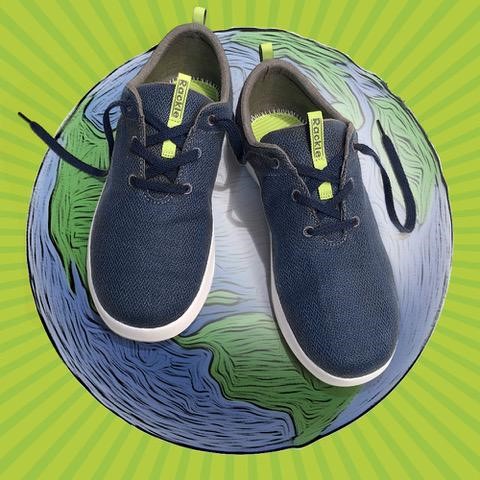Each year, 300 million pairs of shoes are thrown out in America. This is not only a reality, it is also a challenge that demands innovative thinking. Rackle is addressing this problem by building a shoe that is designed to biodegrade faster than any other contemporary shoe on the market.
“We set out to build the most planet-friendly footwear brand possible. In the concept phase we agonized over questions like: What would it be made of? How would it be built? How would we deliver the shoes and how would they be returned back to the Earth,” said creation director and Rackle Founder Joe Napurano.
Every millimeter of these shoes has been painstakingly engineered to deliver a not just a lightweight super comfortable shoe focused on foot health, but also a sustainable shoe, said Napurano, from the materials used all the way through to the kind of adhesives used, which is typically the most toxic part of the footwear manufacturing process.
The Rackle design uses a custom hemp textile to be sustainable, anti-microbial and durable. The team behind Rackle developed its own weave and weight, working with a premier hemp supplier, said the company. The lining and lacing of the upper are cotton and recycled PET.
One of the biggest challenges Rackle faced was how to solve the eco-unfriendly process that is typical when making foam outsoles. Rackle design rethought the process working with a group specializing in eco-friendly solutions and ended with a foam material called EcoPure that is designed to start the material biodegradation process only after reacting with microbes found in landfills. The technology comes from medical industry science that creates dissolving sutures. The result – shoe bottoms that biodegrade 30 to 50 times faster than untreated bottom materials, said the company.
The last piece of the puzzle was how to deliver the shoes. Rackle shoes are shipped in the same box that the shoes are packed in – no outer box which other brands use – and the materials used are all recycled and recyclable.
A few more ways Rackle strives to reduce its footprint include:
- The construction requires fewer pieces than typical shoes, while keeping style in mind.
- The bottom is a “soft machine” in the sense that it uses three densities of foam in its platform to support and respond during a foots natural movement.
- Essentially, the center and the sides have different firmness densities to allow a full arch that can support healthy blood flow.
- The entire bottom is formed together all at once in production to avoid adhesives – resulting in a lightweight shoe with no loss in comfort or wear. 80% less adhesive use than in other brands shoes.








